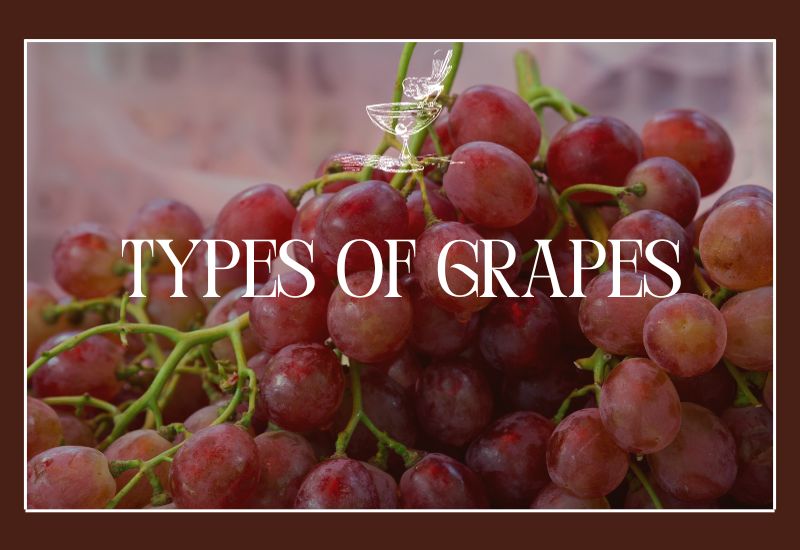Grapes, the quintessential berries, are globally recognized and come in a remarkable variety. California alone, the U.S.’s leading grape producer, has about 50 different types of table grapes.
These vines flourish worldwide, from the temperate regions of New York State to Spain’s sun-kissed fields, all the way to the Peruvian Andes’ foothills.
Grapes are incredibly versatile; they’re enjoyed fresh and transformed into jams, juices, jellies, and wines. However, not all grapes are suitable for each purpose.
The spectrum of grape colors is as diverse as their uses: from deep reds to pale yellows, vibrant greens to almost black hues.
Exploring the world of table grapes—their growing regions, the distinct types, and fascinating trivia—reveals why this fruit is a beloved staple in households across the globe.
Wine grapes
Pinot noir grapes
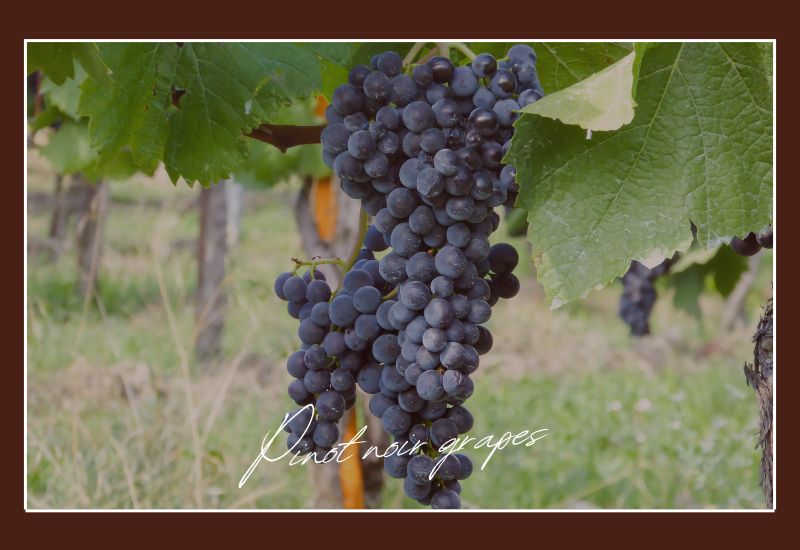
Pinot noir is a red wine grape variety known for tightly clustered, pinecone-shaped fruit bunches. It is grown in cooler climates around the world and is associated with the Burgundy region of France.
Pinot Noir makes red, champagne, and sparkling white wines in Oregon, California, South Africa, Australia, and New Zealand. It is also the most planted varietal used in sparkling wine production.
However, cultivating and transforming Pinot Noir into wine is difficult due to its susceptibility to viticultural hazards and its tendency to produce lightly colored, medium-bodied wines with low tannins.
The wine’s aromas range from red fruits when young to more complex vegetal and “barnyard” aromas as it ages.
Chardonnay grapes
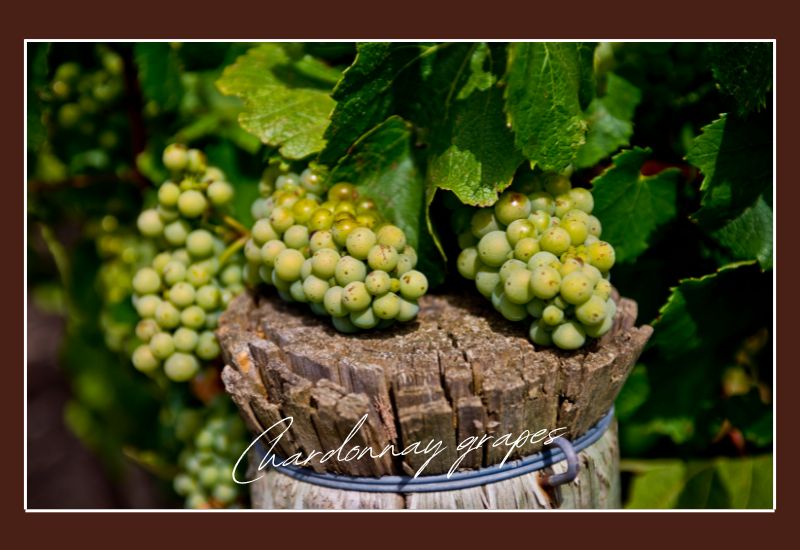
Chardonnay is a green-skinned grape variety used to make white wine. It originated in Burgundy, France, but is now grown worldwide. It is considered a ‘rite of passage’ for new wine regions.
The grape itself is neutral, with flavors influenced by terroir and oak. It is made in various styles, from crisp mineral wines to New World wines with oak and tropical fruit flavors.
It’s medium to light-bodied in cool climates with acidity and flavors of green plum, apple, and pear. The flavors become more citrus, peach, and melon in warmer areas.
Wines that go through malolactic fermentation have softer acidity and fruit flavors with a buttery mouthfeel and hazelnut notes.
Chardonnay is important in many sparkling wines, including Champagne and Franciacorta in Italy. Its popularity peaked in the late 1980s but remains one of the most widely planted grape varieties worldwide.
Merlot grapes
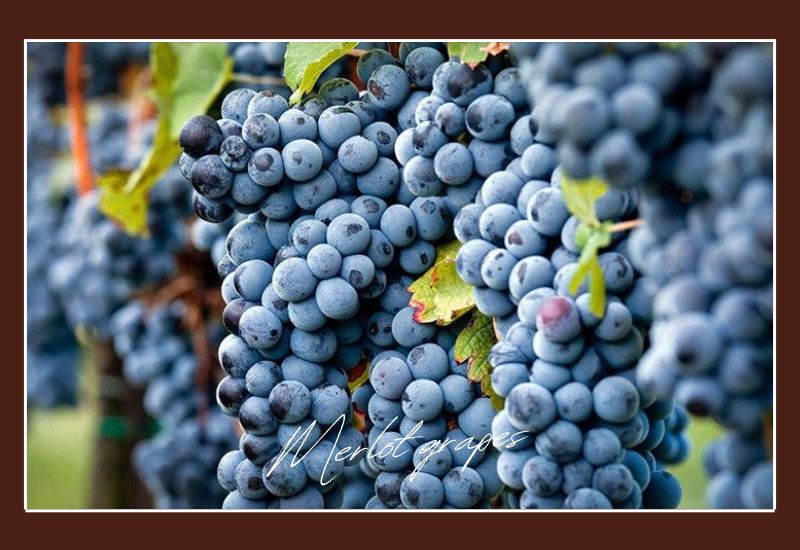
Merlot is a dark blue wine grape that’s great for blending and making its wines. Its name may come from “merle,” French for blackbird, hinting at the grape’s color. Merlot is loved for being soft and ripe early, making it a perfect partner for the harder, tannin-rich Cabernet Sauvignon.
It’s a star in Bordeaux wines and Cabernet Sauvignon, Cabernet Franc, Malbec, and Petit Verdot. It’s also popular worldwide and was the third most planted grape in 2004.
There are generally two Merlot styles. The New World’s “International Style” goes for ripe, bold, and alcoholic wines with a velvety feel and intense fruit flavors like plum and blackberry. The traditional “Bordeaux style” picks grapes earlier to keep them fresh and more moderate in body and alcohol, giving flavors like raspberry or strawberry with some green notes.
Shiraz grape
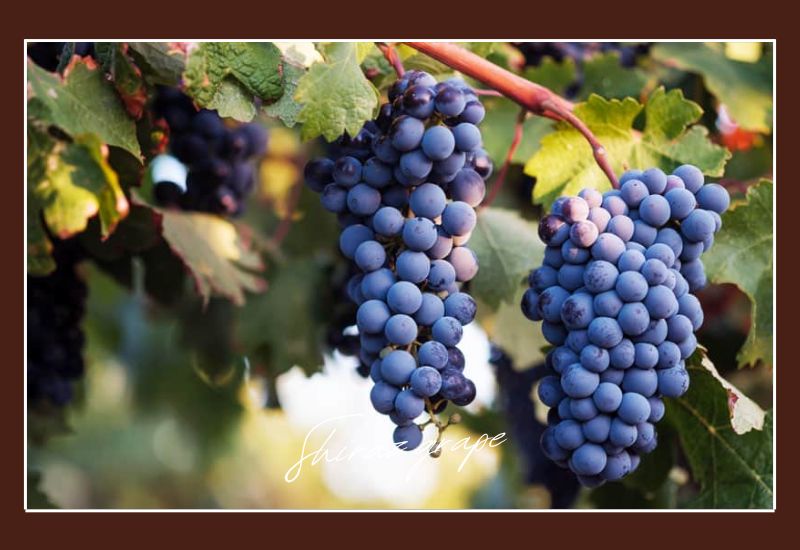
Syrah, also known as Shiraz, is a grape cultivated for red wine. It originates from two lesser-known French grapes, Dureza, and Mondeuse Blanche. Syrah wines vary in taste based on the climate where the grapes are grown.
The wines are medium to full-bodied with robust tannins and blackberry, mint, and black pepper flavors in more excellent areas like France’s northern Rhone Valley and Washington State’s Walla Walla AVA.
The wines are fuller-bodied with softer tannins and more decadent licorice, anise, and earthy leather flavors in warmer regions like Australia’s Barossa Valley and McLaren Vale or Crete.
Syrah wines have good aging potential due to their balanced acidity and tannin. Syrah is famous both as a single-varietal wine and in blends.
It is widely planted worldwide, including in Chile, South Africa, New Zealand, and various regions in the United States and Australia.
Viognier
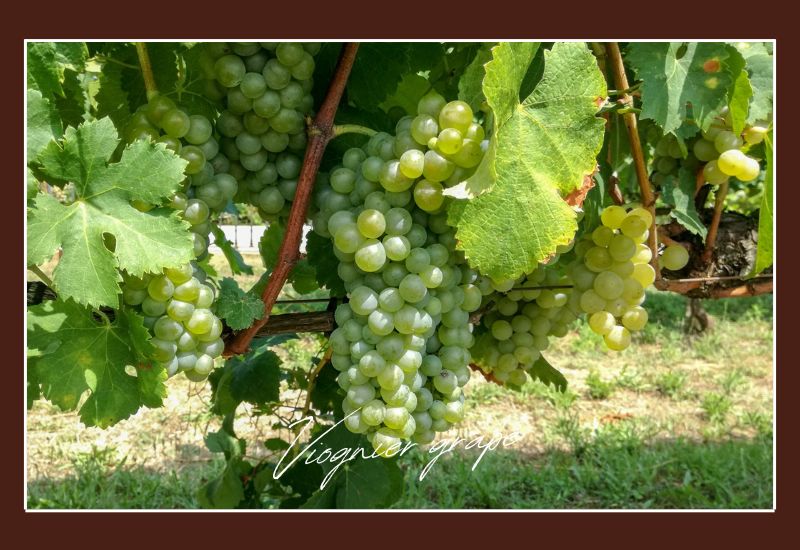
Viognier is a white wine grape known for creating the exclusive French Condrieu in the Rhône Valley. This grape thrives not only in the Rhône but also across the globe, including North and South America, Australia, New Zealand, South Africa’s Cape Winelands, Czechia’s south Moravia region, Israel, and Austria’s Weingut Roland Minkowitsch. When co-fermented with Syrah, Viognier enhances the wine’s color and aroma.
Viognier is similar to Chardonnay’s ability to produce full-bodied, velvety wines. However, Viognier boasts more intense natural aromas like peach, pear, violets, and minerality. These delicate aromas demand careful handling to prevent oxidation, especially during barrel fermentation.
The grape’s quality depends on meticulous vineyard management and a warm growing season for proper ripening. Since Viognier yields less fruit, it can be less profitable for vineyards.
Muscat grape
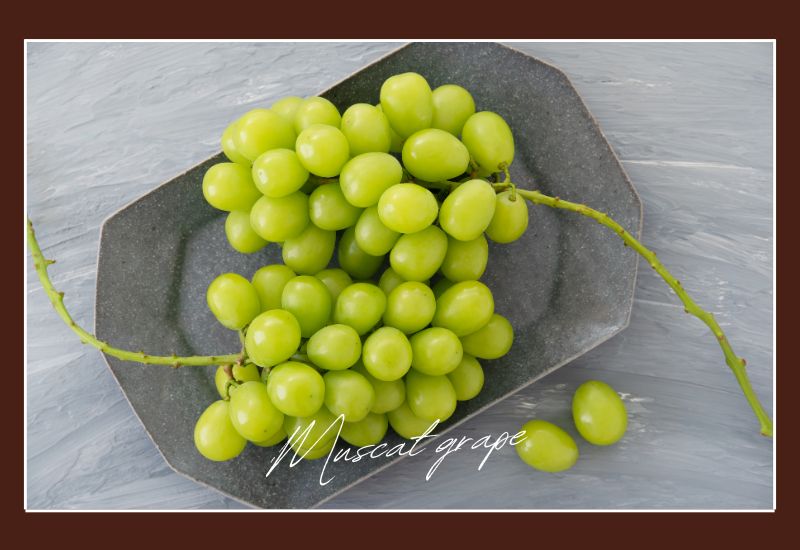
With over 200 varieties, the Muscat grape family is one of the oldest and most diverse within the Vitis vinifera species, used for wines, raisins, and fresh consumption. Muscats vary in color, including white (Muscat Ottonel), yellow (Moscato Giallo), pink (Moscato Rosa del Trentino), and near black (Muscat Hamburg), and are renowned for their distinctive floral scent.
Muscat Blanc à Petits Grains stands out in this family. It’s essential for Italian Asti (Moscato Asti) from Piedmont and many French vin doux naturels. In Australia, the Victorian Rutherglen region uses it to craft Liqueur Muscat. The unfortified, young Muscat blanc is fruity and fresh with citrus, rose, and peach notes. It transforms into a dark, complex wine with coffee, fruitcake, raisins, and toffee flavors when aged and fortified.
Muscat of Alexandria is another key variety, prominent in French vin doux naturel and Spanish Moscatels. It’s also behind many off-dry to sweet white wines worldwide, often labeled Moscato in places like Australia, California, and South Africa. In Alsace and Central Europe, Muscat Ottonel is typically used for dry, aromatic wines.
Barbera grapes
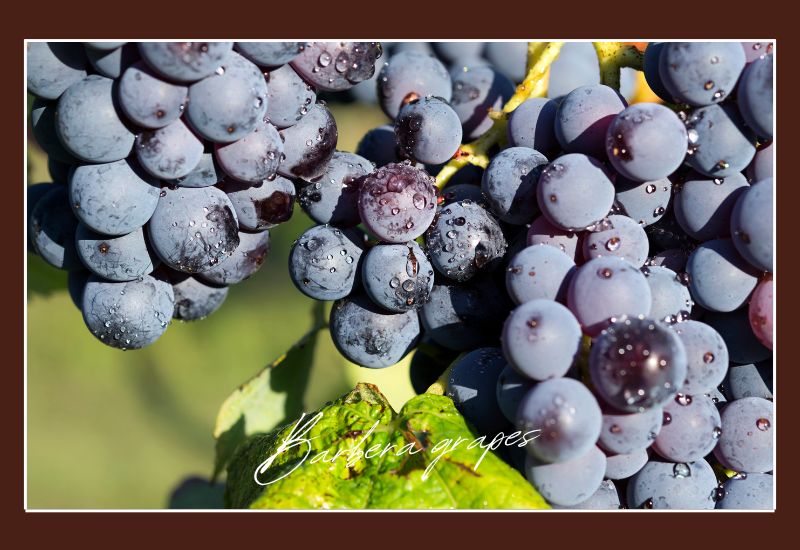
Barbera is a popular red Italian wine grape, ranking third in Italy for red grape variety as of 2000. It produces good yields and wines with deep color, whole body, low tannins, and high acidity.
This grape variety makes robust red wines with intense fruit and tannic content, especially in the DOCG Barbera d’Asti appellation in the Piedmont region.
When young, these wines offer intense aromas of fresh red cherries and blackberries and can develop additional flavors like cherries, raspberries, blueberries, and blackberries as they age.
Some producers use toasted oak barrels to enhance complexity and aging potential. Lighter versions are best enjoyed for their fresh fruit and dried fruit flavors and aromas, while wines with a better balance between acid and fruit, often with oak and higher alcohol content, can be cellared for aging.
White Grapes
Dominga grapes
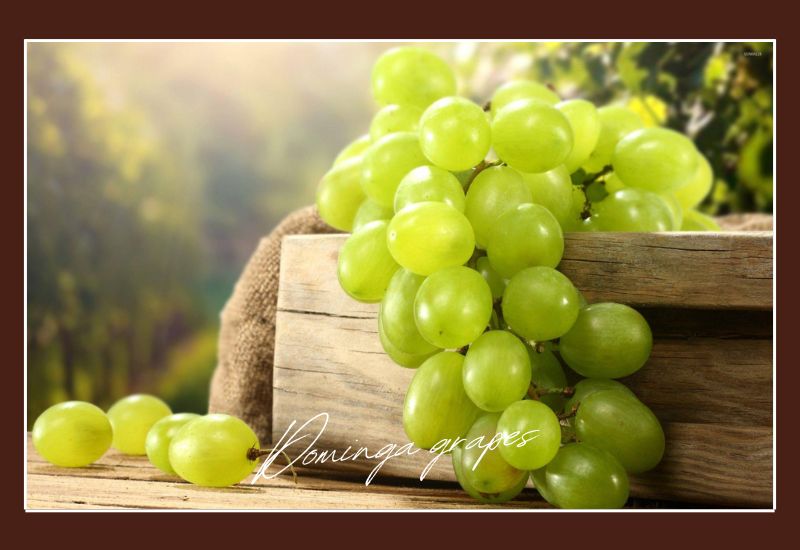
Vitis vinifera, also known as the Dominga variety, is a grape that originates from the Mediterranean. This region’s climate is ideal for nurturing these golden-yellow grapes, thanks to its ample sunshine.
Dominga vines prosper in full sun and are sheltered from harsh weather, with a preference for sandy, well-draining soil.
They’re a top pick for novice and experienced gardeners because of their low-maintenance nature. With the right conditions—adequate sunlight and water—Dominga vines will reward you with lush, subtly-hued yellow grapes.
The growth cycle of Dominga grapes is consistent annually, significantly influenced by their surroundings. Pruning is essential in early winter to ensure healthy growth.
After pruning, the vines need room to thrive throughout the season. Come spring, the flowering begins and extends into the summer.
By mid-fall, tiny grapes appear, ripening just in time for a bountiful harvest. While these grapes contain seeds, they are few compared to other varieties.
Despite their Mediterranean roots, where the sun dominates the sky most days, Dominga vines can adapt to gardens worldwide under the right conditions. Not only do they yield delectable fruit, but their beauty also enhances any garden’s aesthetic.
Moon Balls Grapes
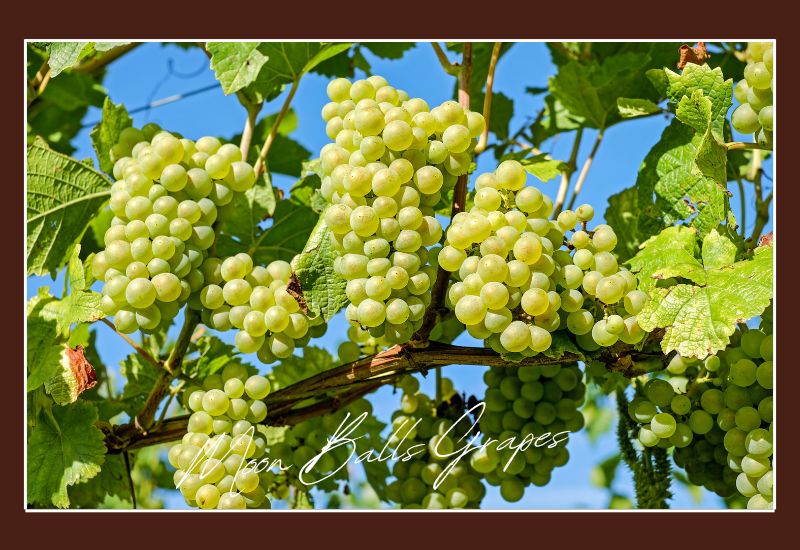
Exclusively developed by Dole, the elusive white-seeded Moon Balls grapes are a rare find, currently grown only in the unique climes of South Africa.
Limited production has kept these gems scarce, but there’s hope on the horizon as Dole aims to expand cultivation globally. We might see many of these lunar-inspired treats gracing our kitchens by next year.
Distinctive in appearance, Moon Balls are large, green, and strikingly spherical—mirroring the notion of an edible bouncy ball. They boast a robust skin that yields a lusciously sweet interior, delivering a sugar content that eclipses your average table grape.
Origin: South Africa
Peak Availability: February to March
Cotton Candy Grapes
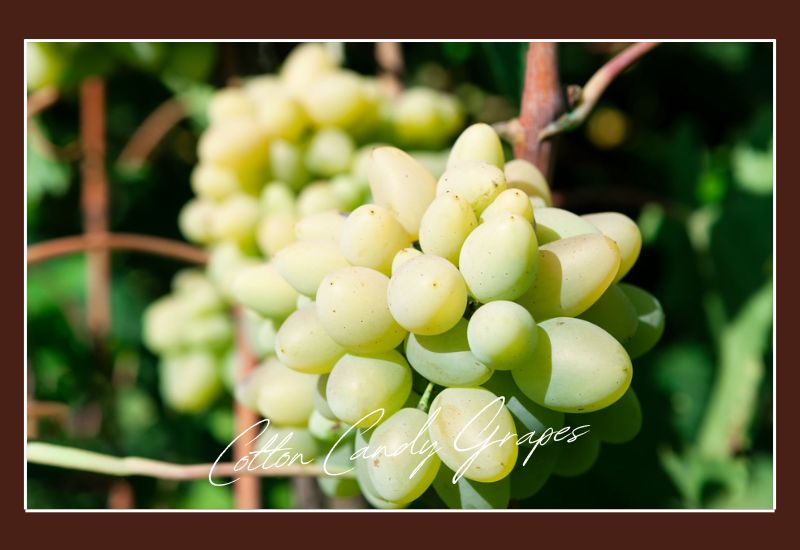
For anyone residing in California, cotton candy grapes are a delightful treat that’s been tantalizing taste buds since 2011. These grapes result from an extraordinary hybridization technique, which imbues them with a distinctive flavor and a texture reminiscent of that airy and sugary fairground staple.
Sporting a vibrant green hue, these grapes exude a unique essence that captures cotton candy’s ethereal sweetness and delicate texture.
Yet, despite their confectionery-like taste, cotton candy grapes pack a nutritious punch. They’re rich in dietary fiber, potassium, and Vitamin C. The only caveat is their higher sweetness quotient compared to other grape varieties.
Centennial Grapes
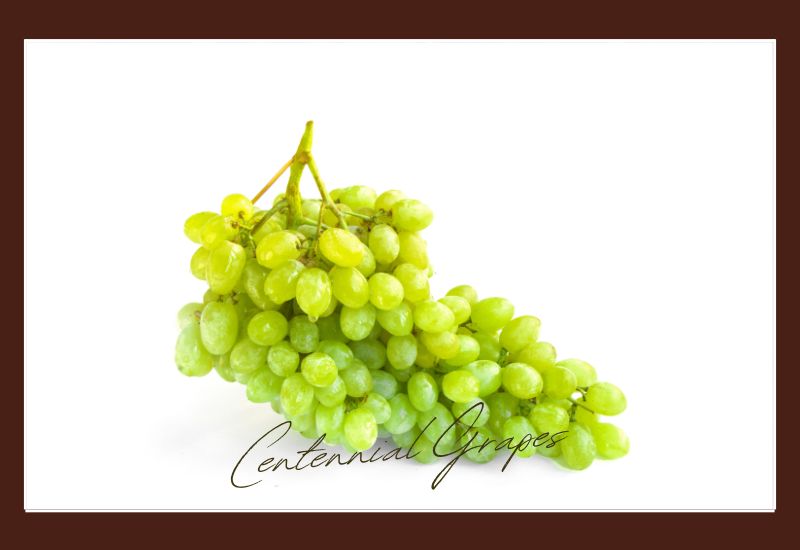
When you reach for a grape from the sun-dappled bowl on your table or spear one with a delicate fruit fork, chances are you’re indulging in a Centennial grape—one of the more giant white grapes. As you pop a raisin into your mouth, savoring its sweetness, you’re also enjoying the legacy of the Centennial grape.
Boasting a pale yellow skin just the right thickness to conceal its succulent heart, these seedless delights were brought to life in 1966 by the pioneering horticulturist Harold P. Olmo at the University of California. Their sweet flavor has been tantalizing taste buds ever since.
Muscadine Grapes
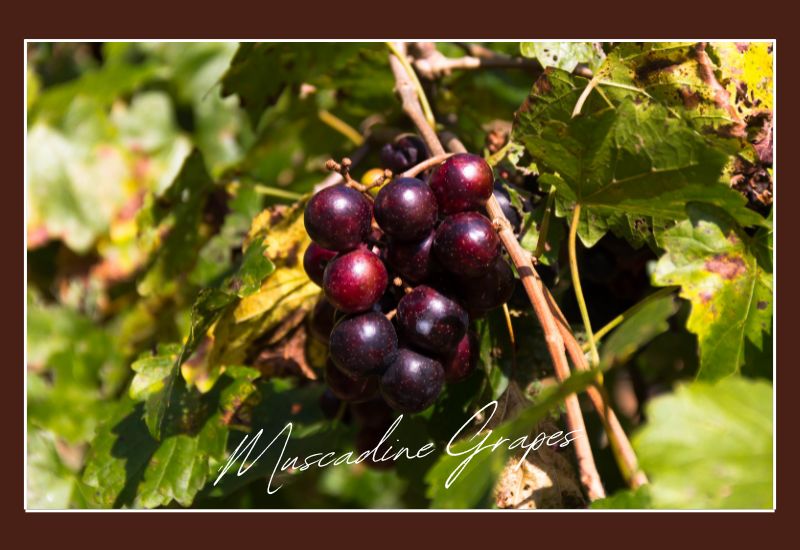
Muscadine grapes are sizable, ranging from green to black as they mature, with a thick skin and sweet, musky flavor contrasted by a tart skin.
Harvested in late summer to mid-fall, these native North American grapes thrive in the Southeastern U.S. Not only valued for table consumption, MusU.S.nes are famed for their use in sweet wines and jellies.
They have been cultivated since the 16th century and were once a top wine choice in America. Today, their skin and seeds are also processed for nutritional supplements. Discovered by Sir Walter Raleigh in the 1500s, Muscadine grapes remain a specialty crop in the U.S.
Thompson Seedless Grapes
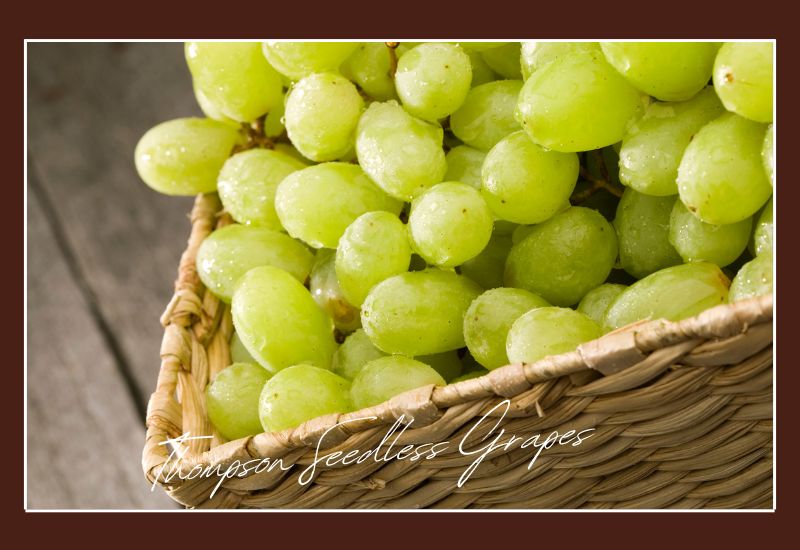
The sultana, also. Sown as the sultana or Thompson Seedless in the U.S., Lady de Coverly in England, and various names across the Middle East and Asia, is a pale green seedless grape thought to have originated from Asia Minor.
This area was once part of the Ottoman Empire. In Turkey, it’s primarily associated with the region of İzmir. This grape variety, commonly called sultanas in many Commonwealth nations, is widely used for producing raisins.
The term “Thompson Seedless” stems from William Thompson, a prominent Californian viticulturist who played a crucial role in cultivating the grape.
In California, which leads U.S. production, this grape is synonymous with the U.S.raisin industry—nearly all raisins produced are from this variety, covering about one-third of the state’s grape acreage.
The Ottoman Empire introduced the sultana grape to Crete in the 1800s, further expanding its cultivation.
Red Grapes
Red Globe
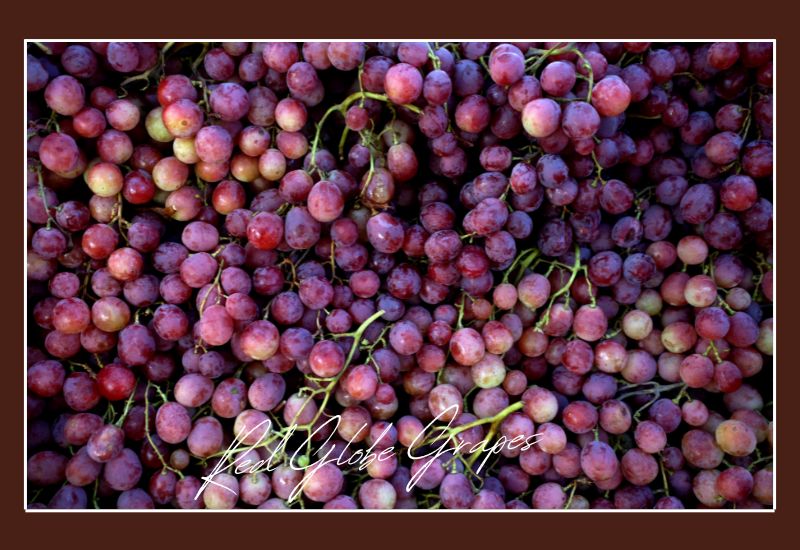
Red Globe grapes are known for their large, round berries ranging from light pink to dark red. They offer a unique eating experience with meaty and crunchy fruit, though their flavor may be somewhat muted.
Despite having seeds, many people find these plump, sweet grapes satisfying. They are popular in Asia, the Middle East, and Eastern Europe, while Western Europe prefers seedless varieties.
Red Globe grapes are rated three stars and are grown in various countries, including Argentina, Chile, Peru, Mexico, South Africa, Australia, the USA, China, Italy, and Spain. They are available on the Dubai market during different months of the year.
Concord
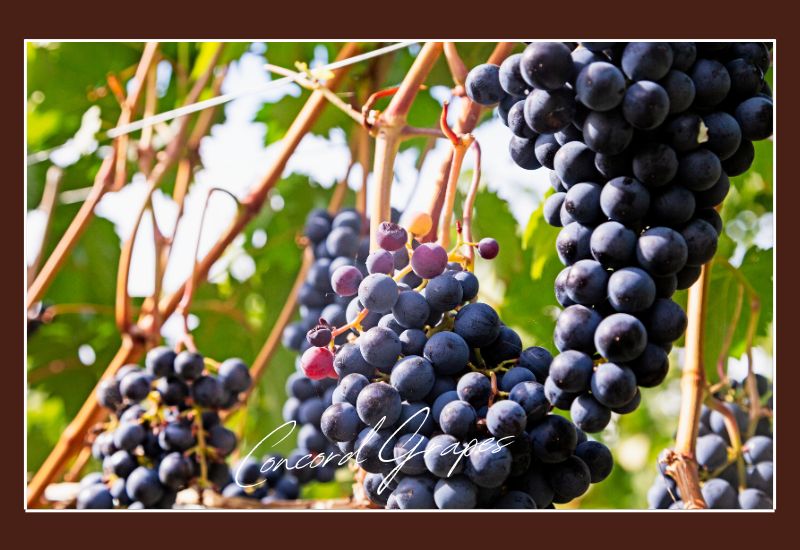
Concord grapes are a type of grape from the Vitis labrusca species. They are used for eating, making wine, and producing juice.
They are often used to make grape jelly, juice, pies, soft drinks, and candy. Some sweet or dry wines can be made from them.
They have dark blue or purple skin with a waxy coating that can be removed. They are slip-skin grapes with large seeds and a strong aroma.
Concord grapes are prone to black spot disorder. In 2011, the U.S. produced 417,800 tons of Concord grapes. The U.S. is grown in various regions, including New York, Michigan, and Washington.
Moon Drops
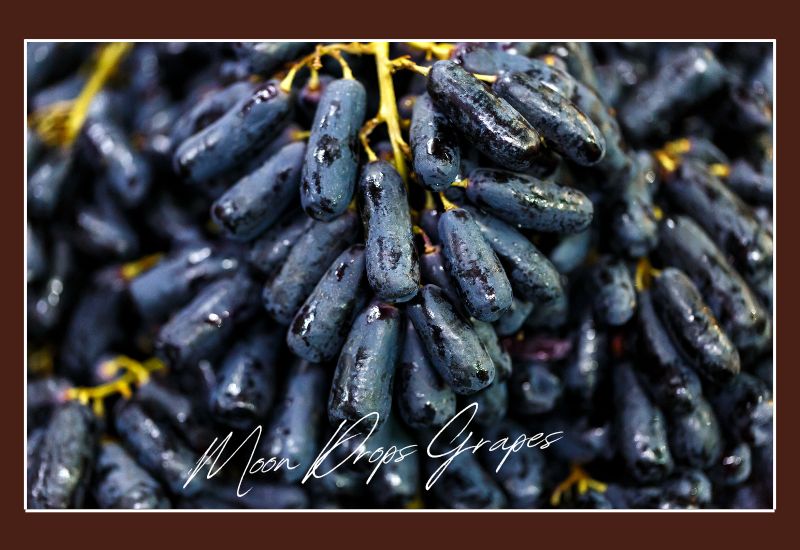
Moon Drop® grapes are a distinct variety known for their elongated, cylindrical shape and characteristic dimple on one end. The grapes have smooth, dark purple skin covered in a blue-grey bloom.
They have translucent purple-green flesh that is crisp, seedless, and sweet. Moon Drop® grapes are available in late summer through early fall for a few weeks.
They are often consumed fresh but can also be used in various preparations such as salads, fruit bowls, salsa, and roasted dishes.
The grapes pair well with nuts, cheeses, fruits, herbs, and meats. Moon Drop® grapes were created through selective breeding techniques and are not genetically modified.
They were developed by International Fruit Genetics and are grown in the San Joaquin Valley in California. A patent protects the variety until at least June 2031.
Valiant

Valiant Grape (Vitis labrusca) is considered one of the best and most resilient grape varieties. It produces clusters of small, dark-purple slipskin fruits with a sweet and slightly foxy flavor.
Valiant grapes ripen exceptionally early, about a month before Concord grapes. The vine is known for its vigorous growth and may even bear fruit in its first year of planting.
This variety was developed by Dr. Ron Peterson, an SDSU graduate from the class of 1944, who returned to finish his degree after serving in WW2.
Valiant grapes are incredibly hardy, capable of withstanding temperatures as low as -35 degrees F (-37 degrees C), making them suitable for cultivation in zones 3 to 8.
Champagne grapes

Champagne grapes are small, sweet, and seedless, with smooth, firm skin in dark red and black hues. They are known for their high sugar content and can be dried into raisins.
The grapes are available in the summer through early fall and belong to the Vitaceae family. They originated in Greece and have been cultivated for centuries.
Champagne grapes are rich in vitamins and minerals and can be enjoyed fresh, used in various recipes, or paired with other foods.
They are also used to produce Corinth raisins or Zante currants. The variety has a long history and is grown worldwide under different names.
Flame Seedless
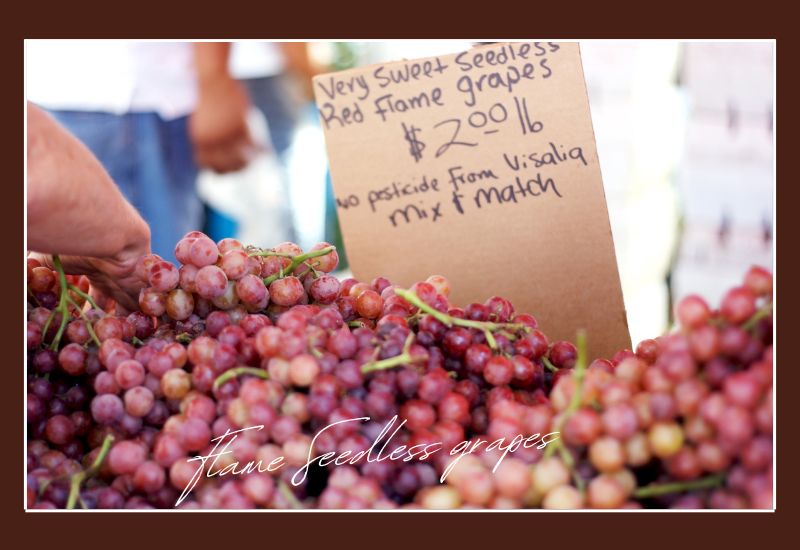
The Flame Seedless is a productive table grape that can be stored long. It combines Thompson Seedless, Cardinal, and other Vitis vinifera varieties. The grapes are large and red, with a sweet taste.
Flame Seedless grapes need a long growing season and do not thrive in cool, damp areas. However, their desirable traits, such as seedlessness, sweetness, and long shelf life, have made them popular in grape cultivation.
The Flame Seedless was introduced to the United States in 1973 by John J. Kovacevich of Arvin, California. To be considered high-quality, the grapes should be plump, well-colored, and firmly attached to the stem. They are typically harvested when fully ripe, as they do not continue to ripen after being picked.
Kyoho grapes

Kyoho grapes, called “giant mountain grapes,” are widespread in East Asia. They were created in the 1930s and 1940s by crossing different grape varieties. Kyoho grapes have a deep purple color, large seeds, and sweet, juicy flesh.
They are similar in flavor to Concord grapes and are known for their slip skin. Kyoho grapes are widely grown in Japan, Taiwan, China, and Korea and are used in desserts and cocktails. They are the most commonly cultivated grape variety globally, with China being the leading producer.
Crimson Seedless Grape
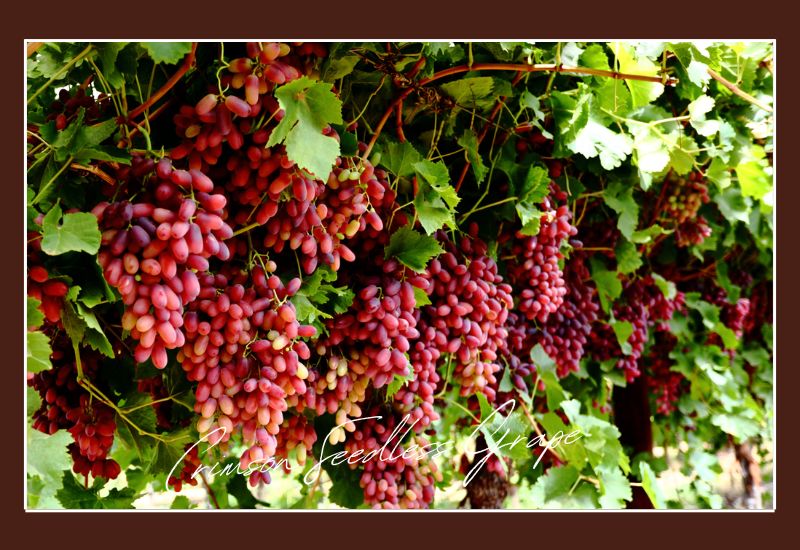
Crimson is a light-red seedless grape with a sweet taste and appealing appearance. It has a pink to dark pink-red skin and greenish-white flesh with medium crispness.
Crimson grapes are late-season and favored by supermarkets due to their extended storage capability. They have been a popular choice for red seedless grapes, although newer varieties are gaining popularity.
Consumers enjoy the sweetness and crisp texture of Crimson grapes. They are grown in various table grape regions and are available in South Africa, Chile, Spain, Italy, Greece, the USA, Mexico, Egypt, and Brazil. Harvest times range from January to mid-December.
Purple Grapes
Autumn Royal

Autumn Royal is a seedless table grape variety first developed in California and released in 1996. It has a diverse lineage, incorporating various grape types such as Black Rose, Calmeria, Flame Seedless, and Ribier.
Autumn Royal grapes are known for their larger size than most other grape varieties. The berries naturally weigh a minimum of 8 grams, whereas the Thompson Seedless grapes weigh around 6-7 grams even after being treated with gibberellin and girdled.
Autumn Royal holds the record for having the most extensive natural berry size among seedless cultivars. The berries have an oval shape and range in color from purple to black.
Conclusion
Discover the world of grapes with their diverse flavors and unique characteristics at Farm to Palm supermarket. From the lusciously sweet Moon Balls and Cotton Candy grapes to the robust and flavorful Merlot and Shiraz varieties, there’s something for every palate.
Explore the global selection of grapes and bring home these exquisite fruits to savor their distinct tastes and create delightful culinary experiences. Visit Farm to Palm today and indulge in the finest selection of grapes worldwide.

